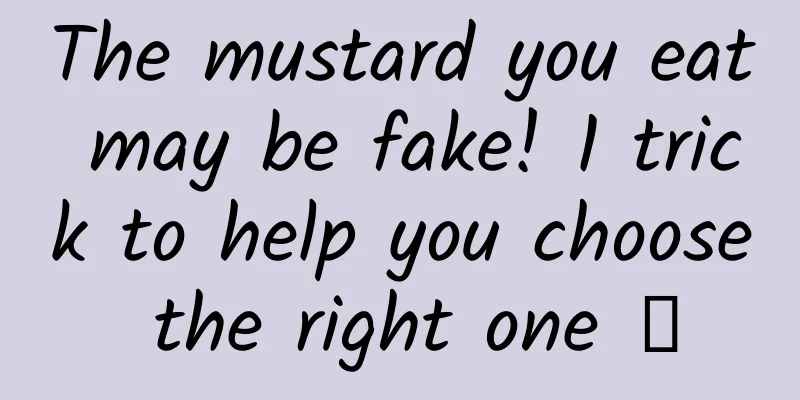User operation: How to do user segmentation?

|
We have said that user stratification is a special form of user segmentation: segmentation by value. So how do we do general user segmentation? Why do many students criticize the segmentation as "useless"? Today I will give you a systematic answer. 1. Intuitive experience of user segmentation User segmentation itself is very simple. For example, the user stratification we talked about in the previous section is actually a simple user segmentation based on a classification dimension, such as:
It is easy to segment users, but difficult to segment users effectively . By effective, we mean that it can help with operations, products, marketing, and sales. For example, we have differentiated between high, medium, and low-level customers. We know that high-level customers are rich, but how should we serve them? What time, what scene, and what activities? Still unclear. Therefore, it is not enough to rely on one dimension for stratification. We need more classification dimensions to make more detailed divisions. Let’s look at a small example: Let's see how this example can be analyzed: (1) First look at consumption habits Judging from the income contribution to the company, the three categories of ABC are at the same level. But in fact, the three categories ABC represent three different consumption habits: A: Centralized purchasing (most likely buying the cheapest on Singles’ Day) B: Seasonal purchases (likely to follow the trend of new products every quarter) C: Frequent purchases (high daily activity, most favored by operations) (2) Different user consumption habits will directly affect the operation methods A: Centralized procurement: one big event will be launched! B: Seasonal purchases: new product promotions every season C: Frequent purchases: check-in + points + weekly activities To decide which one to use, you can refer to the proportion of the three categories of ABC in the entire user structure and choose a main tactic. The effects are as follows: Please note that just because something exists doesn’t mean it is reasonable. It is also possible that the leader said: Although we currently have Group A accounting for 60%, we hope that Group C will account for 60% in the future and we want to change the status quo. In this way, when choosing tactics, you have to consider the characteristics of the C group more and find activities, products, and discounts that better meet the needs of C users. In short, a more detailed understanding of user characteristics can help with operations. This is the intuitive role of user segmentation: through segmentation, more detailed data guidance is provided for operations . Of course, for the sake of teaching convenience, the data in this example is extreme. In actual operation, as long as you can find a classification dimension with high enough discrimination, you will achieve a similar effect. The core question is: how to find it. This is the key to user segmentation. 2. User segmentation steps Step 1: Define what is “valid” This step is very, very important. There are endless ways to segment users. If you don’t define clearly in advance what is an “effective” segmentation, you will be stuck in a sea of details trying to find a needle in a haystack. Many novices tend to overlook this point most easily. When it comes to user segmentation, they rush to cram a bunch of user feature variables into the clustering model. After the clustering, they are at a loss and ask everywhere: "Is there a scientific, authoritative standard for user classification, and anyone who challenges it will be dragged out and beaten?" In the end, they are criticized by the operations team: What the hell are you doing! It is because they have become detached from the actual business and only focus on addition, subtraction, multiplication and division. Effective classification standards, of course, are based on operational needs. We can break down the corresponding data indicators from the operational goals, KPIs, and tasks. For example, the operational task is to increase revenue. We follow the steps below to transform the business problem into an analytical problem. With the classification criteria, we can check whether the segmentation is effective. For example, the goal is to find user groups with high cumulative consumption. Finally, it depends on whether the consumption differences among the segmented groups we have found are high enough and whether we have really targeted the high-spending groups. The specific effect is shown in the figure below: Step 2: Find the classification dimension from the perspective of operational means After finding the classification criteria, we can see from which dimensions to segment users so that the differences between user groups can be more obvious. This is another big pitfall, because it seems that there are so many optional dimensions. Many students are confused and wonder how they should choose. Or after finally selecting them, the operation staff asked: Why are they divided like this? He replied: This is a huge difference! Then I was criticized for not understanding the business and doing things recklessly. It was so depressing... In fact, there are certain standards for filtering classification dimensions, and there is no need to run around everywhere: (1) Select dimensions with reliable data sources For example, for basic dimensions such as gender and age, many companies do not have a strict data collection process, there are many data gaps, and the authenticity is difficult to guarantee, so don't use these. Try to use reliable data such as consumption, activity, and registration sources. (2) Select dimensions that operations can influence For example, the development team may be very concerned about the device model, but the operation team can't do anything even if they know it, so don't choose it at this time; there are some indicators that the operation team pays special attention to. For example, if the operation team wants to issue coupons, then the user's coupon collection rate and usage rate are particularly good indicators. (3) Select indicators with obvious differences in their own stratification Some indicators have little difference themselves and the data distribution is very concentrated. In this case, they are not given priority. Instead, those indicators with larger distribution differences are given priority. Based on the above three standards, you can avoid blindly conducting experiments to find a needle in a haystack, and also avoid being criticized by operations as "what's the use of this". Some students may think that this process is very similar to finding features when building a risk control model. It's really similar, but there are differences. The business actions corresponding to the risk control model only include "pass/reject", so there is no need to consider so much. When doing user segmentation for operations, you need to consider: activity theme, time, product, selling point, communication channels... a lot of things, so you must consider which dimensions are useful for operations. Step 3: Try segmentation and observe the results With the classification dimension, we can try to divide the classification standards. There are three very thorny issues here:
Let’s start with the results: In principle, the final number of categories should not be too many, and each group should have operational significance . To operate an event, one needs to design posters, prepare goods, develop systems, and prepare to allocate resources. Therefore, if the group size is too small, it is not suitable to do activities alone. Therefore, when doing user segmentation, it is customary to limit the groups to a maximum of 8 categories (each group has a share greater than 10%). As for the specific size, it can be designed based on project goals and operational conditions. Under this general principle, it means that the classification dimensions and the divisions of each dimension cannot be too many. Try to select key dimensions and key division points. If there are too many dimensions, consider using a dimensionality reduction algorithm for compression. When segmenting in each dimension, pay attention to the following issues: If you segment in a single dimension and find that some segments are special, you cannot merge them at will (as shown in the figure below) In short, the classification process requires repeated attempts in many steps until the ideal result is finally output. 3. Special Note: The Difference Between User Segmentation and Recommendation Algorithms Many articles online confuse user segmentation with personalized recommendations for each individual. Although verbally, many people would say: We do user segmentation in order to understand user needs and achieve the effect of providing different services for different people, but in business these have two different meanings. Targeting a specific group, operations can take many leading and innovative actions. For example, if we want to expand the high-end user group, we can launch a new product line, a new reward policy, and a new service to attract high-end users. As long as I understand their preferences and behavioral habits, I can do it very accurately. However, the premise of a new design is that the user has a certain size and it is worth it for me to do so. Therefore, when doing segmentation, you cannot consider too many dimensions, and cut it too finely, which makes the promotion extremely complicated. I want to announce it to the world and let everyone know that we are doing this, so that we can create a herd effect and achieve greater results. The recommendation system is not subject to this restriction. The recommendation system completely closes the information channel. Everyone sees things differently, so as long as the user response rate can be increased a little bit, it will be fine. Therefore, we recommend existing products, and try to match users and products as much as possible. Recommendation systems cannot generate new ideas and new effects, nor can they design new products. So there is no need to worry about whether the split is detailed or not, as long as the business goals can be achieved. 4. Summary: The real difficulty of user segmentation After watching the whole process, you will find that user segmentation is something that is simple in principle but complex in operation . The operation is complicated. It is not a modeling process at all. Instead, it is about grasping the target, screening the dimensions, and grasping the size of the segments. All of these must take into account business needs . Although data and statistics provide us with many tools (classification tools, dimensionality reduction tools), we still need to consider specific business scenarios to truly use them. We have never lacked students who can recite textbooks, what we lack are analysts who can consider practical scenarios. Many newcomers don’t understand this. If you ask them:
Their answer, of course, was: We don’t know. Then he asked stubbornly: Why do you care about this! ! ! I just want to know, is there no authoritative standard for the number of categories for Kmean clustering in the e-commerce industry? ! ! Is it 5 or 8? ! ! ╮(╯▽╰)╭ Special reminder: Living in the books of the school library will not solve the actual problems of the enterprise. Author: Down-to-earth Teacher Chen Source: Down-to-earth Academy |
<<: 4 elements to effectively increase user growth!
>>: How to promote Xiaohongshu
Recommend
A woman forgot to turn off the electric heater and burned down two floors! Remember the "three cleanings and three closings" for home fire prevention
recently A woman in Changsha forgot to turn off t...
How to choose high-quality advertising channels?
Today we come in and talk about the logic of bran...
Polymer framework - greatly reduces the cost of coding for developers
Polymer provides you with all the necessary tools...
The latest news on the lifting of the lockdown in Shanghai Pudong in 2022: When will it be lifted? The most closed area policy!
Recently, the epidemic situation in Shanghai is re...
Where does the smell of cilantro come from? Is your love for it determined by your genes?
This article was reviewed by Sun Hai, a plant sci...
Don’t do these 4 “eye-damaging” behaviors anymore! If you don’t pay attention, your eyes will really be “scrapped”…
As the saying goes, eyes are windows to the soul,...
A rare thousand-year-old oak tree was found in Henan! Was it planted by a famous general of the Sui and Tang dynasties?
"It is rare to find two thousand-year-old pr...
There are also auroras on Mercury, but they haven’t emitted light yet!
Produced by: Science Popularization China Author:...
Why is KFC’s social death event so popular?
KFC’s social death event is coming! In the past t...
From the Electron-Positron Collider to the Spallation Neutron Source, his name is important
Over the years, my belief in the Party organizati...
He fell in love with math puzzles because of the tangram, and now he has solved a century-old problem
At the end of May this year, a Finn who fell in l...
Let the data speak for itself: What will be the next phenomenal APP?
The explosion of WeChat public accounts has broug...
How to build a good live broadcast room?
I believe everyone is already familiar with the c...
In the battle of autonomous driving, LiDAR is not the key, single-vehicle intelligence or vehicle-road collaboration is the winner
Not long ago, Tesla announced that the autopilot ...









